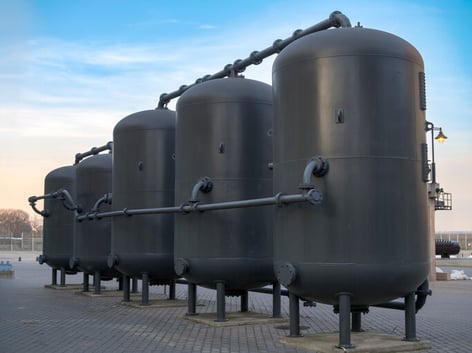Pressure vessels continue to be crucial across various industries. They are used to store gases and liquids under high pressure. Over time, the technologies and designs of these vessels have evolved, driven by the need for improved safety, efficiency, and cost-effectiveness.
What Role Does Material Science Play in Modern Pressure
Vessel Design?
Material science has seen significant advancements. These advancements directly impact how pressure vessels are designed and manufactured.
In the early days, traditional materials like steel were the go-to choices due to their strength and availability. However, the landscape has drastically changed. Modern standards like pressure vessels EN 13445 now take into account these advancements to ensure more efficient and safer designs.
Emergence of Composite Materials
A leap in material innovation is the advent of composite materials.
Unlike conventional metals, composites offer a high strength-to-weight ratio. They are also resistant to corrosion. This makes them ideal for handling hazardous substances. Manufacturers now often use fiber-reinforced polymers (FRPs) and carbon-fiber composites to construct lightweight yet robust pressure vessels.
New Metal Alloys
Alongside composites, new metal alloys are being developed with superior properties. These alloys can withstand higher pressures and temperatures without degrading. Nickel-based superalloys, for instance, are gaining popularity in high-stress applications such as chemical reactors and aerospace engineering. These materials not only enhance performance but also extend the lifespan of pressure vessels.
How Do Computational Tools Aid in Pressure Vessel Design?
Computation has revolutionized many fields, including pressure vessel design. Engineers can simulate various conditions to test how their designs will hold up before physically constructing anything.
Finite Element Analysis (FEA)
Finite Element Analysis (FEA) is a powerful computational tool. It allows engineers to model complex geometries and simulate different stress conditions on their designs. Using FEA, designers can pinpoint weak spots that may not be evident through traditional methods. This aids them in making necessary adjustments early in the design phase.
Computational Fluid Dynamics (CFD)
This technology simulates fluid flow within the vessel. By understanding how pressurized fluids interact with vessel walls, engineers can optimize design features to minimize risks such as erosive wear or turbulent flow issues.
What Are Some Smart Technologies Used to Monitor Pressure
Vessel Health?
Traditional pressure vessels required manual inspections to ensure they maintained structural integrity over time. The rise of smart sensors and IoT technology has made it easier to monitor vessel health continuously.
Embedded Sensors
Smart sensors embedded within the pressure vessel material can provide real-time data on various parameters such as temperature, pressure, and strain.This sensor data helps in predicting potential failures before they occur. Think of it like having a smartwatch that tracks your health metrics constantly but for industrial equipment.
IoT Connectivity
With IoT connectivity, data collected by sensors is not just stored but analyzed using cloud-based algorithms. Operators receive instant alerts if something goes awry with the vessel’s internal environment. This proactive approach significantly reduces the risk of catastrophic failures and downtime.
The Bottom Line
Pressure vessels are evolving thanks to advancements in materials science, computational tools, and smart technologies. These innovations make vessels safer, more efficient, and ultimately more reliable.
FAQs
What are some common applications of modern pressure vessels?
Modern pressure vessels find usage across multiple industries such as oil and gas, chemical
processing, pharmaceuticals, and even food and beverage production.They are key components in processes involving storage or reactions under high-pressure conditions.
Are there any regulations governing pressure vessel design and
manufacturing?
Absolutely! Different regions have specific standards to ensure safety and reliability. In Europe, for instance, manufacturers must comply with standards like EN 13445.
How is additive manufacturing impacting pressure vessel design?
Additive manufacturing or 3D printing offers unique benefits for designing complex vessel geometries that would be difficult or impossible to achieve with traditional fabrication methods. This can lead to more efficient designs tailored to specific applications.




